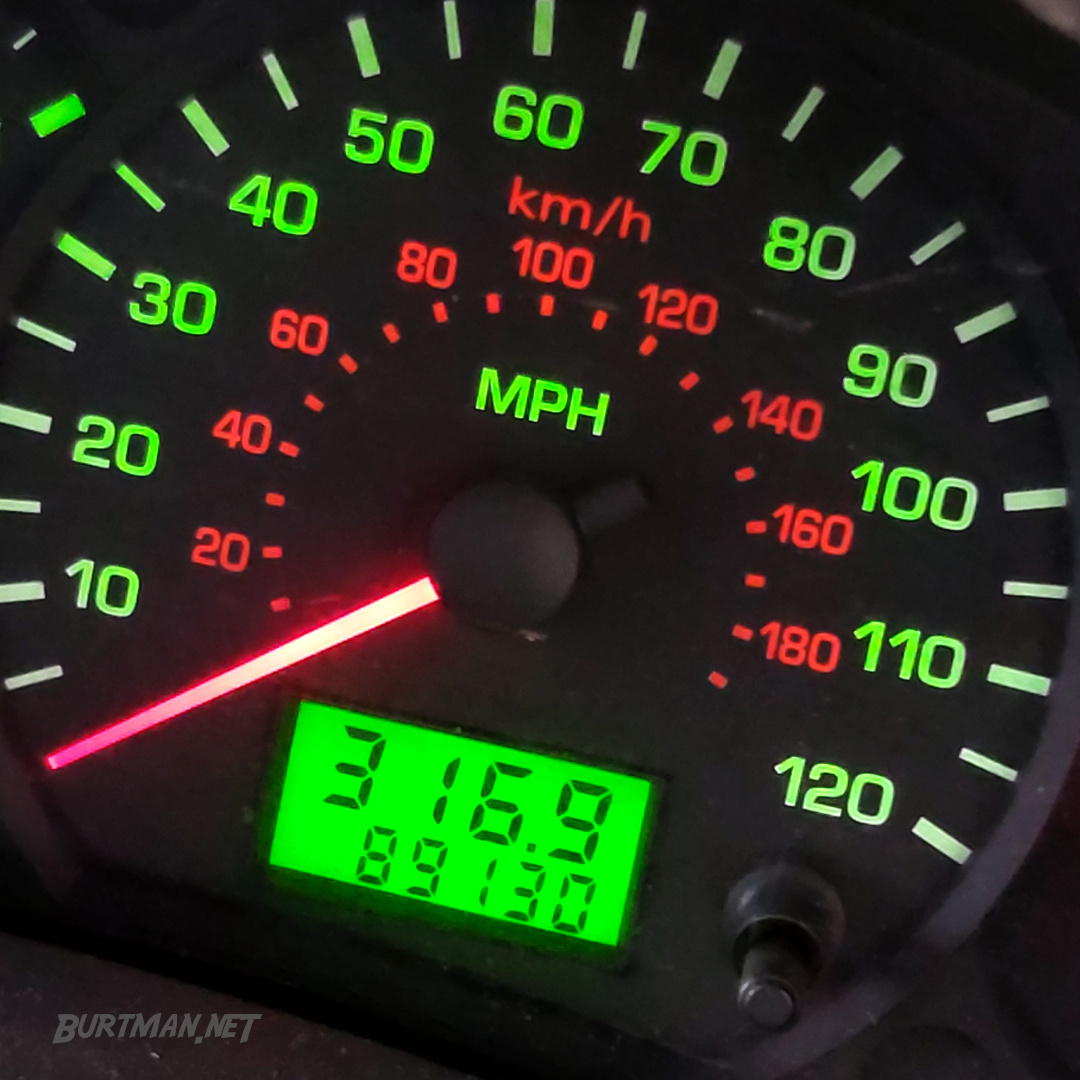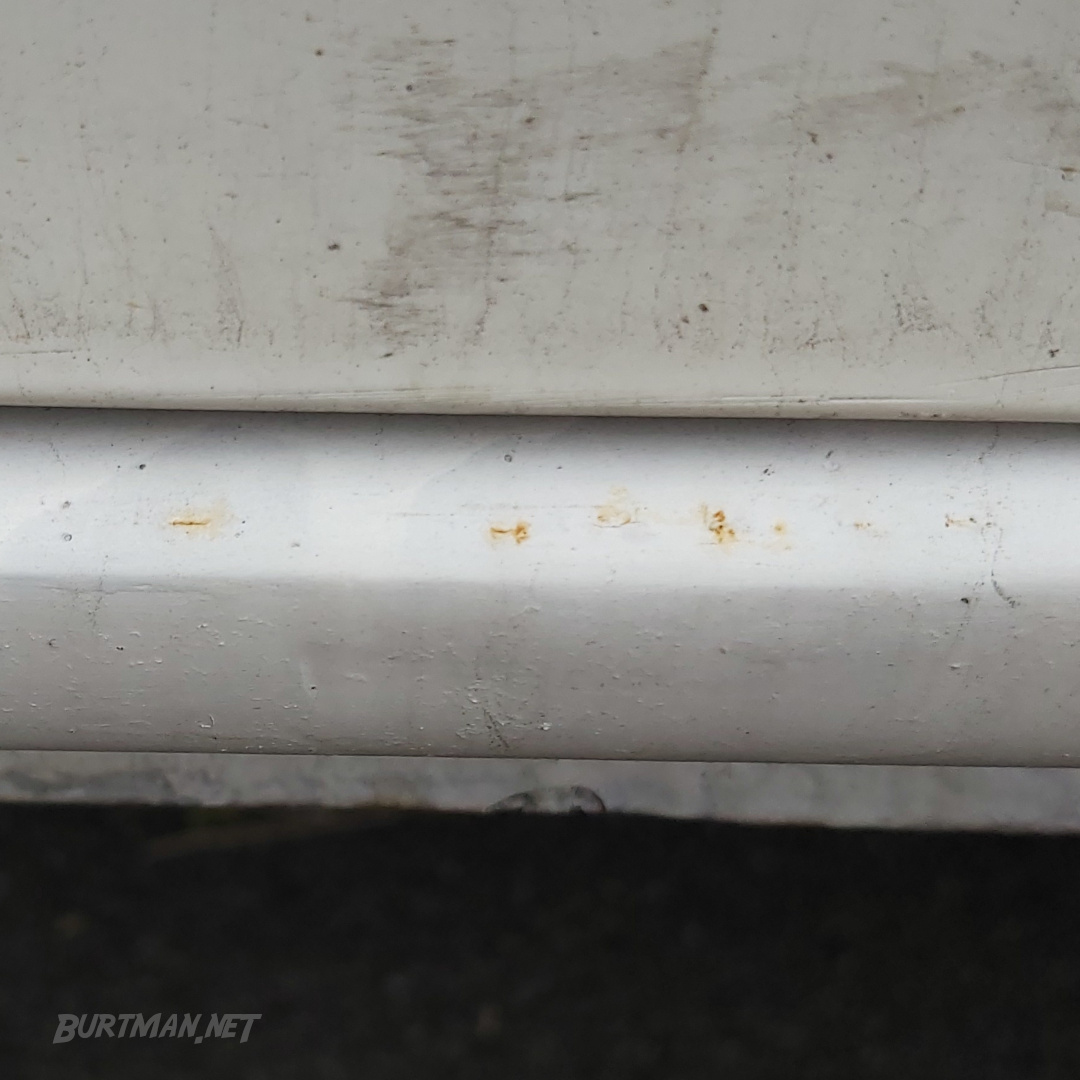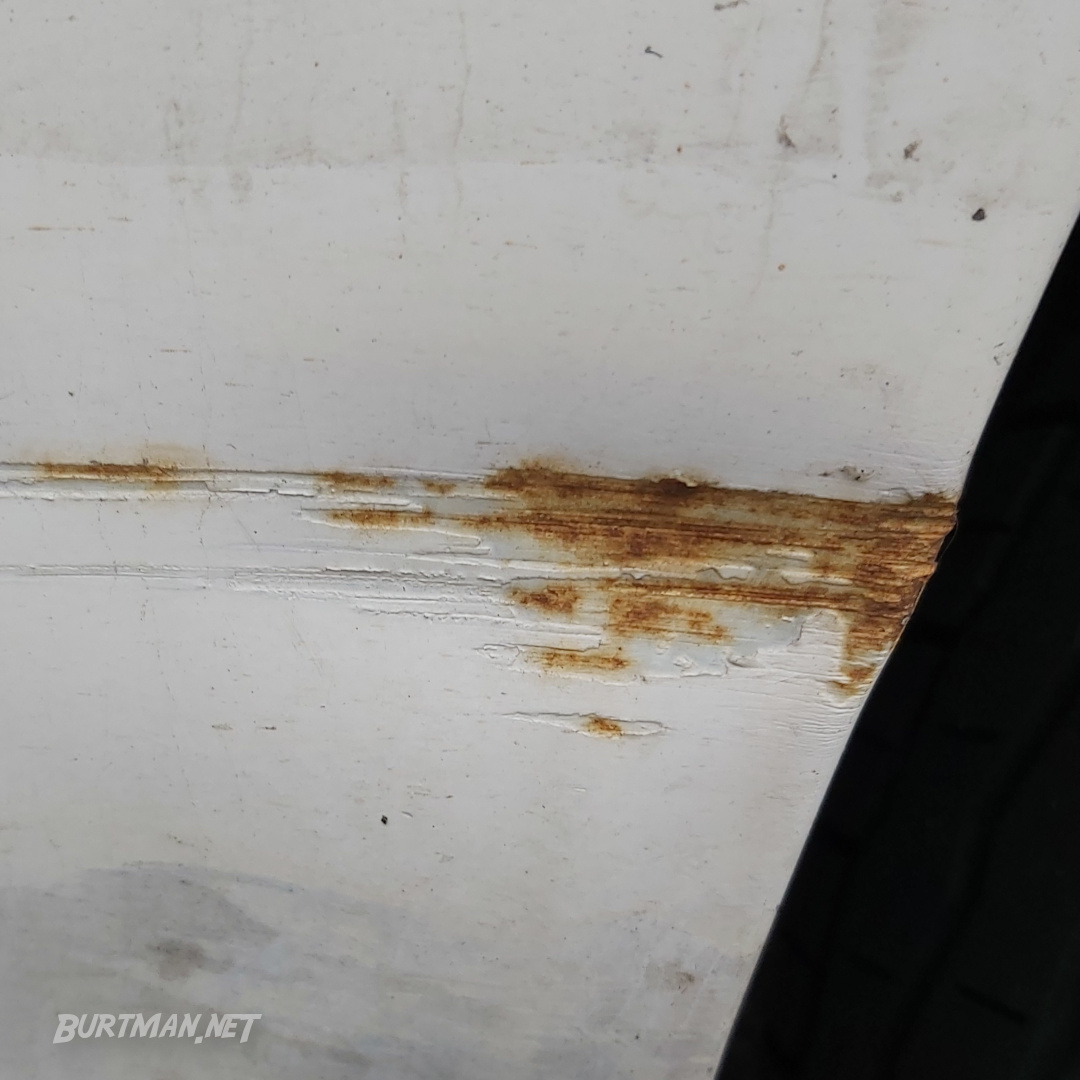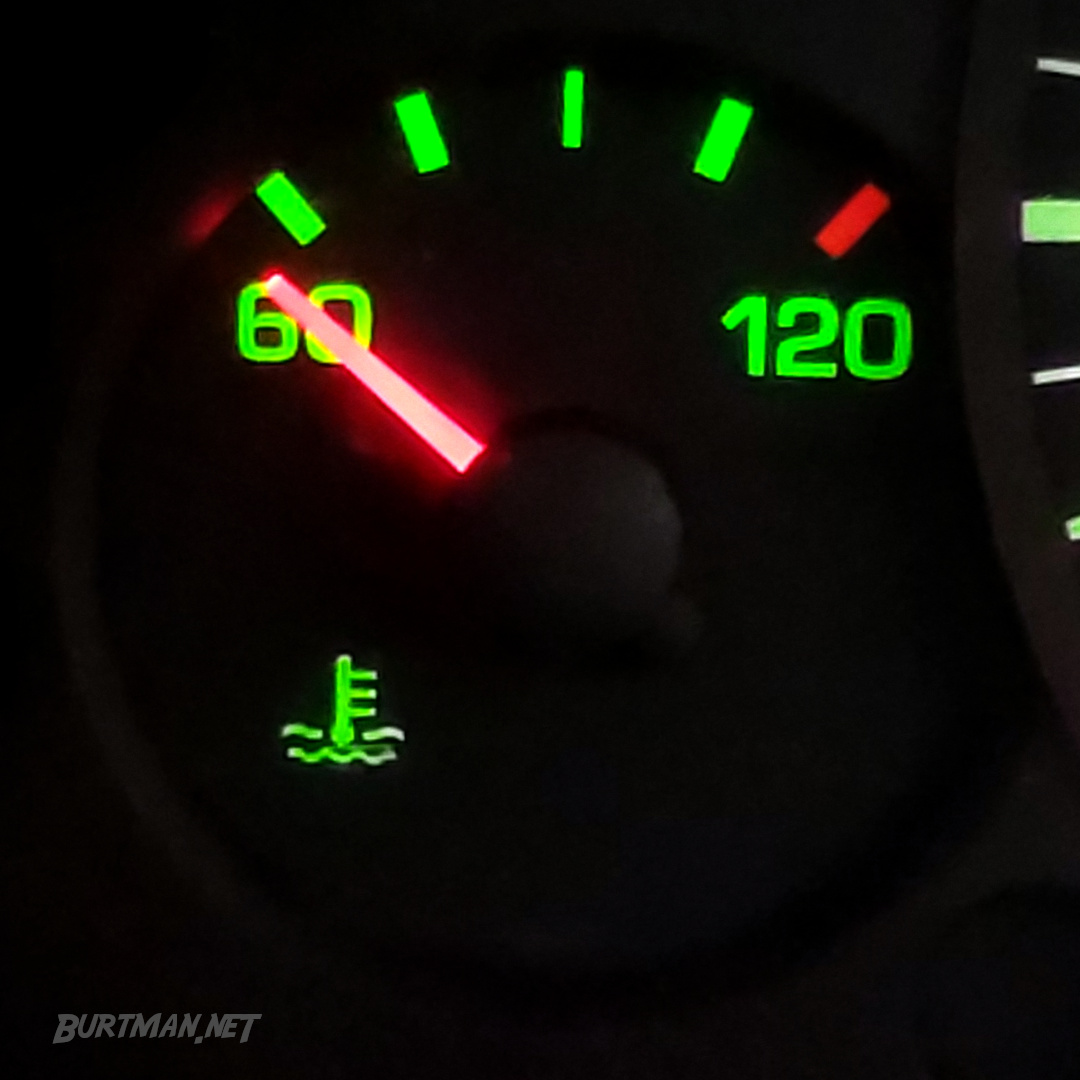Tips For The Viewing
Buying A Used Van (Part 2 Of 2)

Updated:
These tips are not exclusive. Do your own research and go with your gut. If possible, take a knowledgeable friend with you to a viewing, as their experience may prove invaluable.
Play it safe when visiting strangers. It's usually a good idea not to go alone unless you know how to handle yourself.
Now you're looking at vans, this section should help with deciding whether the van you're looking at is worth considering.
When you arrange a viewing, ask the seller to leave the engine cold so you can inspect it. More on that in a minute.
Money IS an object
Now, since most of us aren't in the custom band, let's look at some things you'll need to look out for when going to see a van from a local used car dealer, ebay, or another source, in no particular order:
Service history
This is, in my opinion, the most important thing to look at, even before seeing the van. If the service history is missing or flimsy, walk away. On the other hand, if there have been excessive repairs, there may be some underlying problem that hasn't been properly fixed, but that's fairly unlikely. Pay attention to the service dates, stamps and comments. If the majority of the work has been carried out by reputable garages, the receipts are present, and there aren't any huge gaps in the recent history, things may be looking good for this van.
However, if you find a lot of the jobs have been carried out without a stamp (someone's friend did it on the lawn), there's no telling what kind of bodges may have been inflicted on this van. It could be held together with body filler, for all you can tell.
Check the documents to see when the clutch and cam belt were last changed. If the clutch has done more than 50,000 miles since last change, consider the possibility that it will need to be changed in the near future (that will largely depend on how carefully the van has been driven). The cost of a clutch replacement can be anywhere upwards of 400 euros (although ebay sometimes has great deals on clutches, in case you or someone you know can fit it).
The cam belt should be changed at 80-90,000 mile intervals or sooner. Cam belt change can also be fairly expensive. Some vans, however, do not have cam belts. If you find a van that has a timing chain, you will probably not have to worry about changing it at all, but certainly not right away. In any case, taking a used van for a check up after purchase is a good idea.
Take a look, also, at the results of the most recent four or five technical examinations, to see if anything serious was noted, and if it was repaired. Consider a missing technical inspection certificate a red flag, unless there is some other document showing that the van was not in use, such as a Statutory Off Road Notice (in the UK).
Mileage
Mileage confuses many people. It's not actually an accurate indication of the condition of the van, or even of the engine, because a van that's been driven carefully and well looked after will do 180,000 miles without falling apart, while a van that's never serviced, sits for years without care, and treated like a throw-away tool could be on its last legs after 80,000.
Regardless, check the mileage on the clock against that of the most recent technical exam to make sure the displayed mileage is genuine. Looking at the mileage in the previous exam paper can give you an idea of how heavily used the van has been. If the mileage between annual inspections is drastically different, the van's had a lot of use, so you will need to look more closely at the paperwork to make sure services have been completed at reasonable intervals and crucial changes (clutch, cam belt, in particular) have been carried out.
Bear in mind that diesel engines tend to last much longer than petrol engines, and if you're buying an import, don't forget to check if the odometer is measuring miles or kilometers. There's a big difference.

Odometer displayed below the speedometer, which, in this case, shows miles and kilometers. As this van was designed for the UK market, the odometer is showing miles, not kilometers.
Note: Imports can present problems with compliance to local rules, and you could end up paying import fees and other heinous extortions. Be careful. One such compliance issue will be whether the speedometer shows MPH or km/h. In Europe, where km/h is used, a British car showing only MPH will not be allowed to be imported until the dash clocks are changed to km/h. Having clocks showing both units will tick that box without any extra work or expense.
Rust
Rust is practically inevitable on older vehicles. Years (or decades) of exposure to humidity will eventually take its toll on all untreated metal, and can devour metal from the inside without even showing up under the paint. A few spots of light rust in unimportant places can be treated easily enough and doesn't present any real problems. By all means, check it out and use it as a bargaining tool, but don't immediately discount a van that has visible rust.

Light rust in an easily-reached area of a sill.
You can check how serious rust is by knocking on it with your knuckle or a blunt object that won't damage paintwork (it's not your van, yet). If you knock a rusty section and see or hear a rust storm falling down, you might want to pass. If that knocking sound is dead and sounds more like wood than metal, it's probably serious, too. Depending how big the section of rust is, how many of them there are, and where they are, you may or may not want to pass.
It's very common to see rust on the wheel arches, but it can be fixed fairly easily, and if the rest of the van is good, it might still be worth considering. Even having arches replaced at a workshop isn't too expensive. Rust on the engine block is also very common, as the engine is also exposed to the environment and isn't usually painted. Don't worry about that unless it looks serious. If brackets are falling off when touched and wires are snapping in your hand, that would be considered serious.

Deeper rust on a wheel arch can still be repaired easily as long as the steel is still solid.
Also check door hinges, window edges, the floors underneath the mats (if possible), and the underside of the van in general. The chassis, in particular, could be in very bad shape if the van is old, and that could be dangerous and illegal. If the chassis is good, the floor looks fine and the rest of the bodywork passes the knock test, you're probably not looking at a nail.
Tires & belts
Have a look at both, checking carefully for cracks that show the rubber is perishing and will need immediate replacement. The cost of a new set of tires can be substantial, although it is perfectly reasonable to buy used tires at a discount, as long as you buy them from a reputable establishment.
As far as belts, your best bet is almost certainly ebay. You can pick up guaranteed original parts at discount prices on many ebay shops, and that can save you a lot of money compared to buying from a high street parts store.

If you see the threads inside the belt, it needs replacing.
Do a history check
Use a service like https://www.mycarcheck.com/free-car-check/ to find out if the vehicle has been stolen, scrapped or written off by an insurance company. Although not strictly a case for walking away, I wouldn't generally risk buying something that has flags of this kind. Even if the vehicle is fine, it could be difficult to insure and it could get you stopped by the troublemakers. All of that is the kind of hassle you can do without.
Seller's body language & sale location
If you're faced with a deal that seems too good to be true, it may well be. If the seller is nervous, rushing you to buy, or otherwise gives you a bad vibe, just walk away. A legitimate seller with a reasonable offer will be calm and helpful, and won't be in a rush to sell to you, as they will know that others will also be interested.
If you were promptly given the home address of a private seller when you asked for it, check that the documents of the owner match that address. If so, there's a good chance there's nothing to hide. If the seller is selling from a friend's house, a closed or unrelated business premises, or an abandoned train station, they don't want you to know where they live, and that's probably because they are expecting you to come back looking for a refund. Don't touch it if it doesn't feel right. There's always another van to look at and some of them are genuinely great deals. This one doesn't have to be it.
Take a test drive
If all seems well and the appropriate insurance is in place, go for a test drive.
Since you asked the seller to keep the engine cold, you can see how the vehicle starts. This is important and informative. Some starting problems only show up when the engine is cold, so pay attention to how it starts and check that the temperature gauge is pointing at the lowest temperature, so you know it really was cold.

The temperature gauge doesn't usually register below 60°C. It should take a few minutes before a cold engine reaches this temperature and the needle starts to move.
If there are any problems starting, the seller will most likely jump to explain them away. Listen carefully to the explanation and take it with a pinch of salt. This is a good time to watch body language again. If you're happy up to now, leave the engine running, turn on all the lights (including hazard lights) and walk around the vehicle. You can see if the lights are working and listen to the engine and exhaust from outside. Even if you don't know what you're listening for, you're probably going to notice if it doesn't sound normal, since you're used to hearing vehicles from the outside. A blowing exhaust sounds a bit like flapping cardboard and although it's not the end of the world, it needs to be fixed fairly soon. Smoke from the exhaust could be an entirely different ball game, and given the likely causes, I would pretty much consider that a deal breaker.
All good? Hop in! Don't be afraid to adjust the seat and mirrors - you need to be safe. Drive carefully and pay attention to the sounds, dashboard lights and smells. Listen for unfamiliar whining, knocking, and other sounds that may indicate problems. Do you smell a sweet fragrance from the air vents (coolant)? Do you smell fuel? Burning (clutch, brakes, wiring)? Are there several air fresheners in the van to mask these smells? Anything leaking is bad news. Especially petrol. Any smoke?
Also pay attention to how easy it is to change gear, turn the wheel, accelerate, brake, etc.. If anything seems like a lot of effort, or doesn't seem to work as expected, there may be serious (read: expensive) problems with the engine, gearbox, clutch, or other systems. If the engine dies unexpectedly at any point, regardless of the explanation (except for user error - stalling), I'd probably walk away. Spontaneous cutoff could cause an accident, and diagnosing it could be time consuming and expensive. Not worth it.
Make sure to drive on a variety of roads, if possible, so you can see how the vehicle handles at speed and in traffic. Hitting a short section of highway will also give the engine a chance to warm up. If the steering wheel vibrates at speed, it could indicate that one or more of the wheels need to be re-balanced. Not a problem, but ask the seller about it and see what they say. Don't be worried if you receive a simple response like 'the wheels probably need balancing' or 'I'm not really sure'. Be worried if there is an elaborate excuse. That's never a good sign.
Window stickers
If the van you are looking at has security stickers on the side windows, they should carry the registration of the vehicle. Have a quick look to see if they have the same reg. If they don't, it may indicate that the van has been involved in an accident and been repaired cheaply. While broken windows are no big deal in a vehicle's history, both sides would be cause for alarm, as it may indicate a violent break-in or collision, either of which could mean other hidden damage is present.
If there's anything I missed, let me know in the comments. :)
Sign In To Leave A Comment
There are no comments marked as public for this item.
Stay Up To Date





 Van Life
Van Life Read around 1,000 times
Read around 1,000 times For Everyone
For Everyone